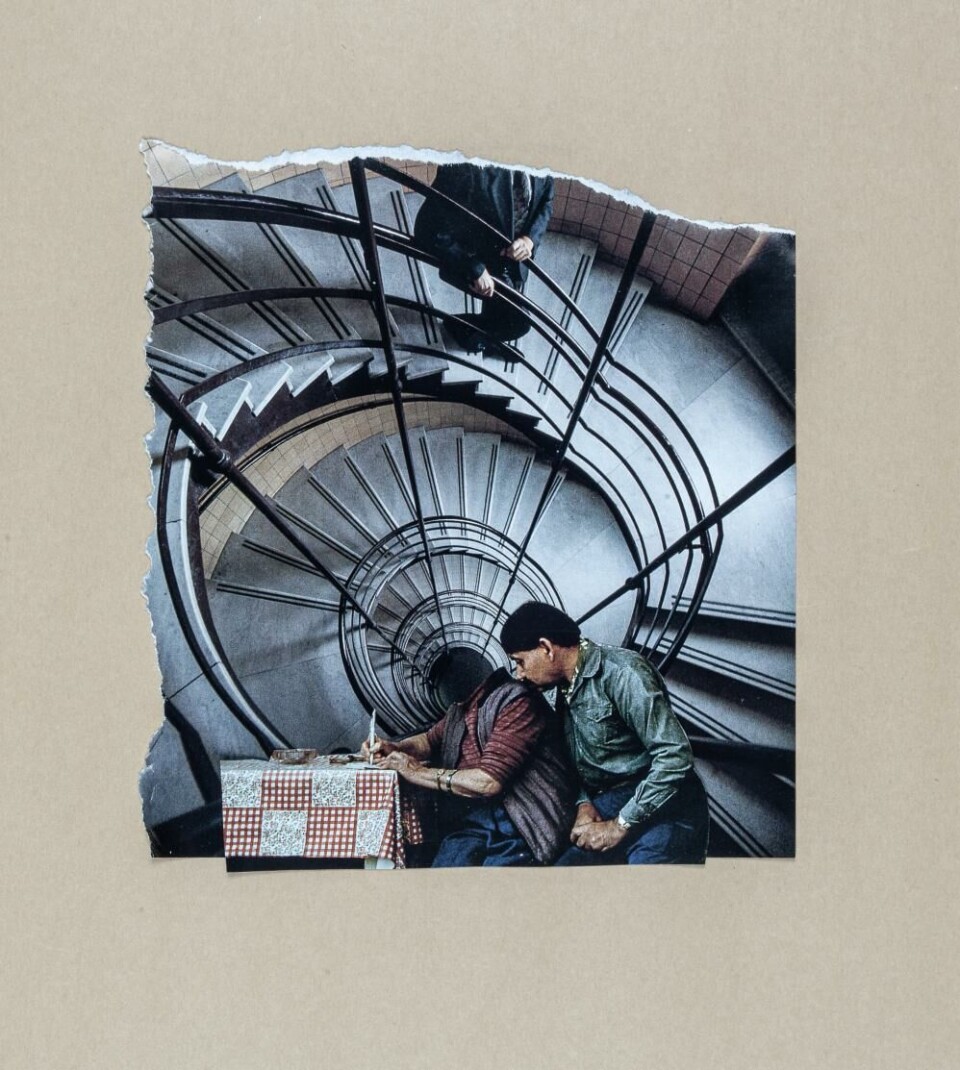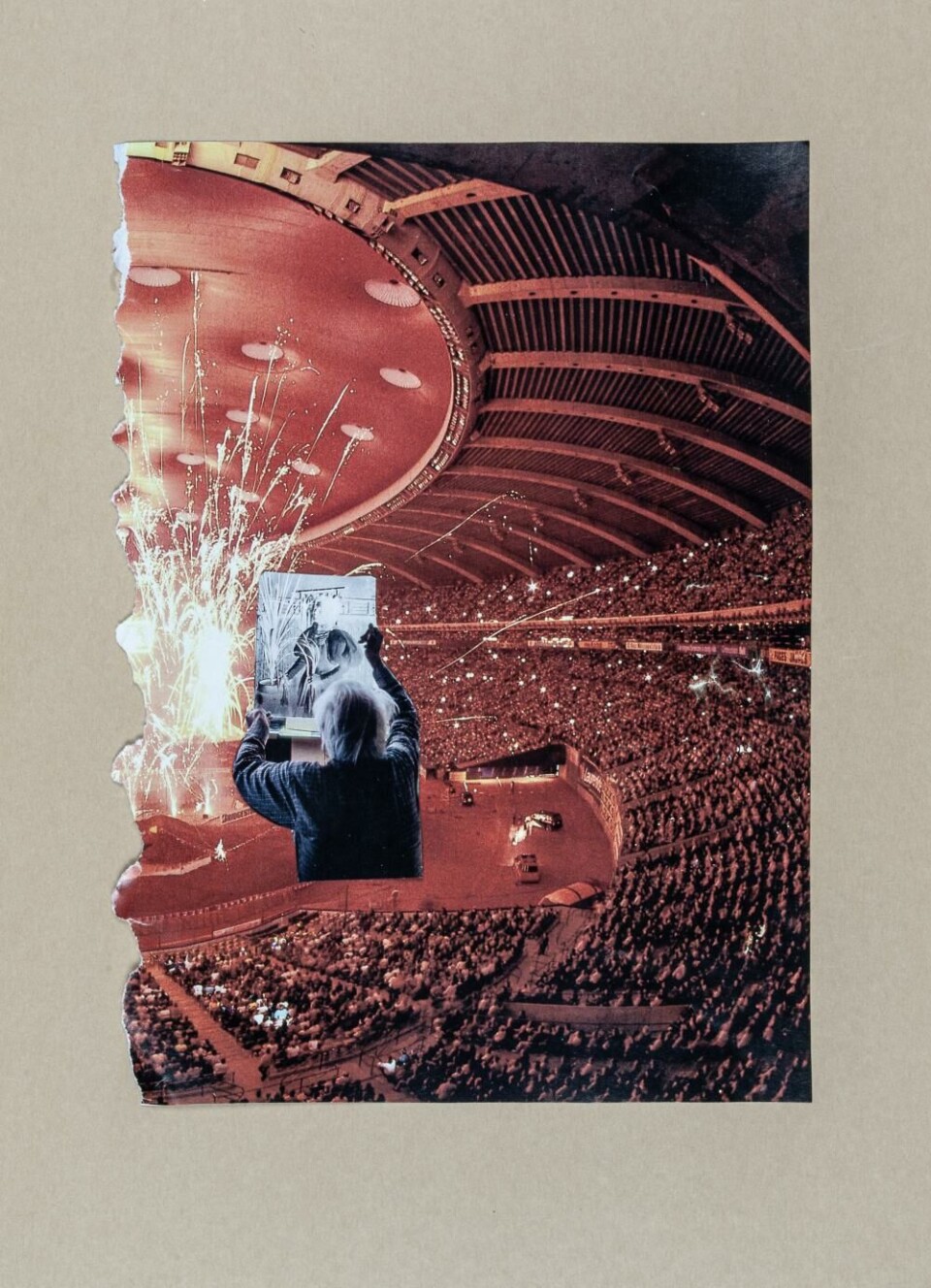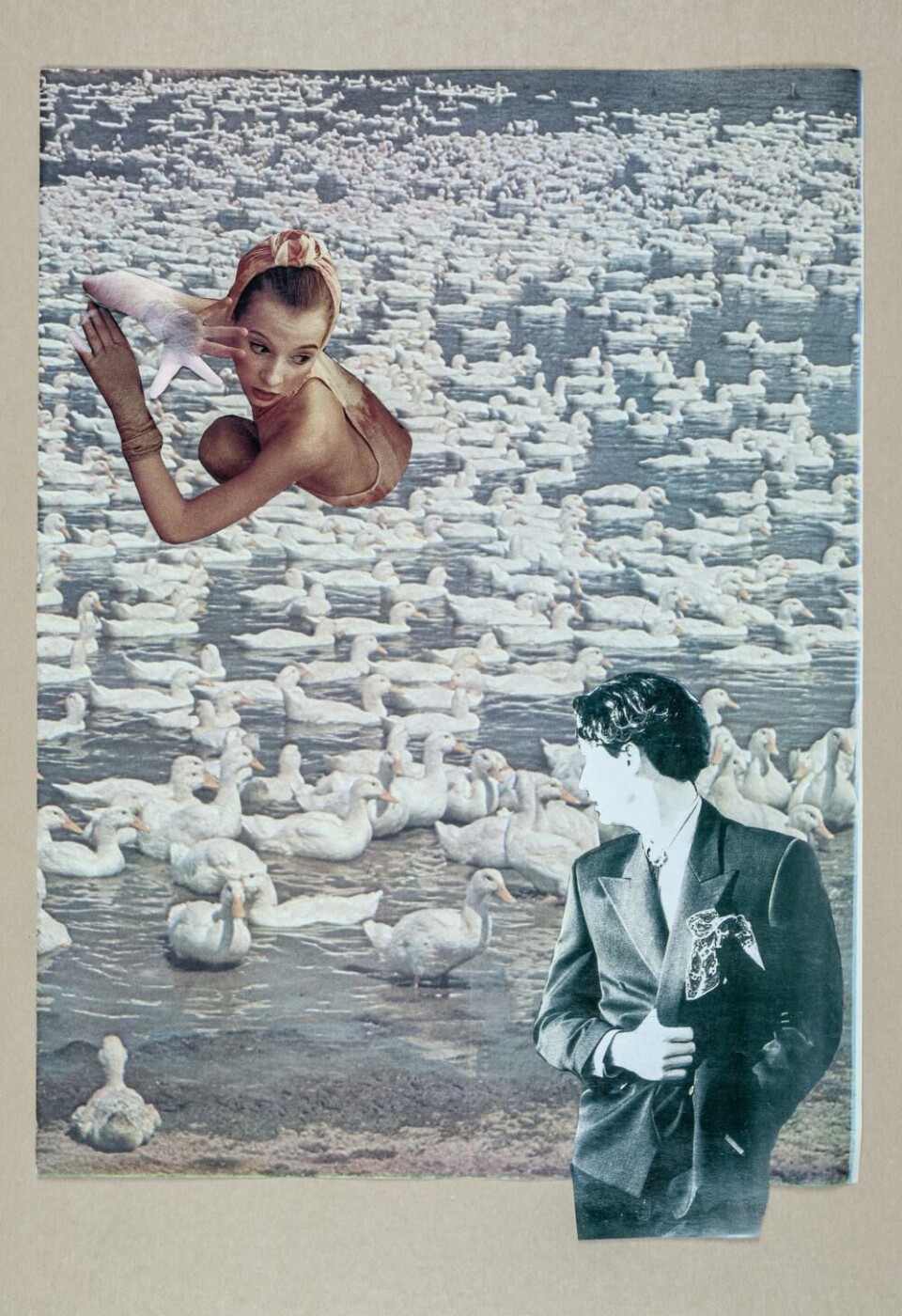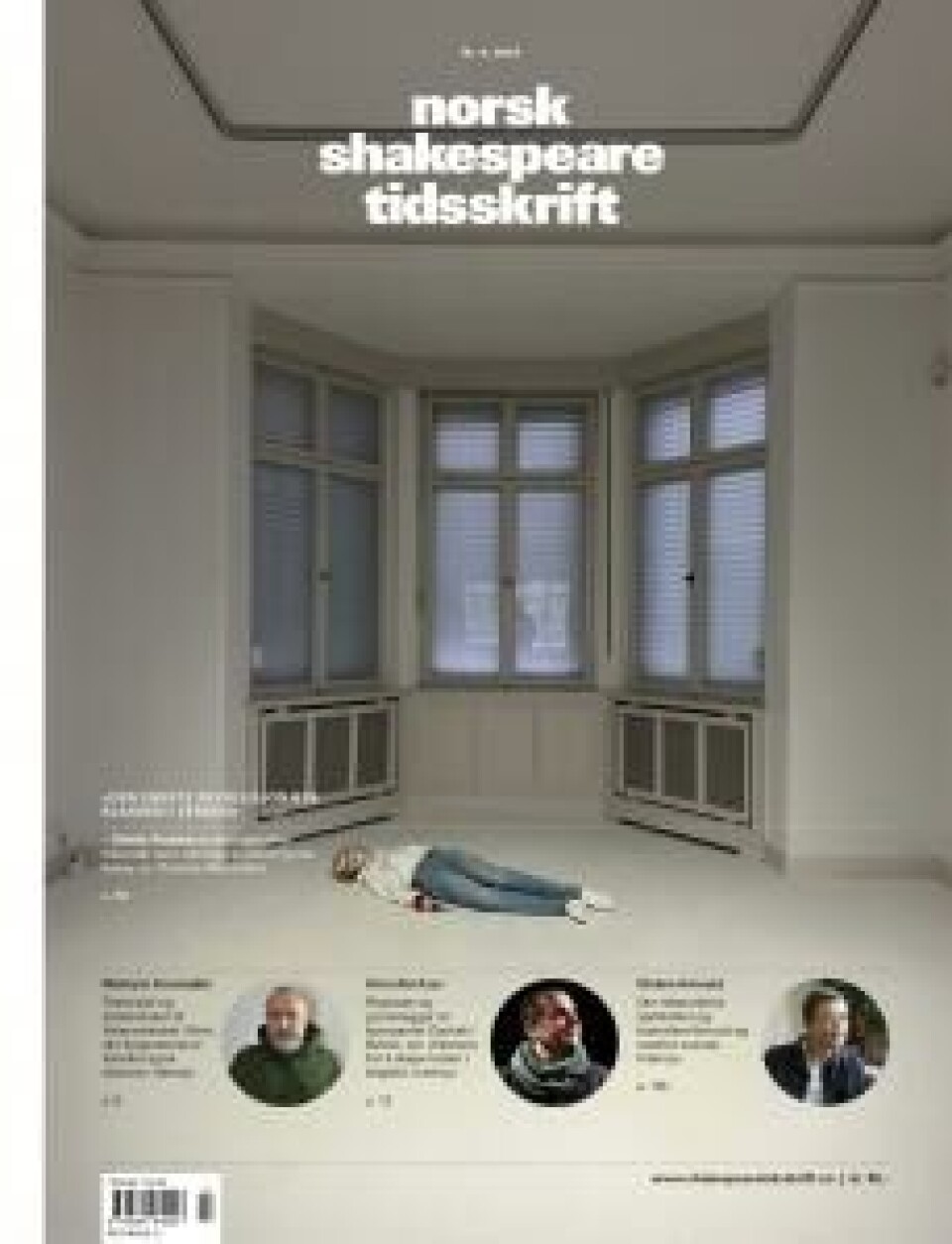
ESSAY
Six short stories on being a performer and what we (don't) own
Over the past year, heated discussions about plagiarism, copyright, and ownership have taken center stage in Norwegian stage arts. In these debates, artistic and legal perspectives on authorship often clash. Ilse Ghekiere set out to explore the performer’s role in this context by highlighting the perspectives of other performers, allowing their insights to guide us through this labyrinth.
1. INTERLOPER
«Inherent in being a performer there is a kind of a psychological voyeurism, where I get to actually figure out so much about the composer or what they have put into this piece. To some extent, performance is a massive exercise of empathy…» With these words, the violinist and broadcaster Nadia Sirota introduces The Performer: Part One on her podcast Meet The Composer. In this episode, she explores the role of the performer and reflects on her own experiences performing the music of others.
To Sirota, the performer is a kind of «interloper»; a person standing between the composer and the audience, interpreting the work by embodying the musical score. Reflecting on how «weird» this constellation actually is, she says: «I don’t ever really experience a piece of music unless I inhabit it. Unless I get to perform it.»
I first listened to The Performer episode a couple of years ago and was deeply moved by the narrative Sirota had woven. I’ve always strongly identified with the role of the dancer/actor, though it hasn’t been without its challenges. At the start of my career, it seemed only natural to want to work for as many choreographers as possible. I craved the experience of being on stage, where the real dancing happened. Choreography didn’t particularly interest me, and I certainly didn’t see myself as someone who wanted to tell others what to do. Observing dance from the outside felt like the least exciting part of our art form. Instead, I wanted to, as Sirota put it, to «inhabit».

Although the world of music differs from that of theatre or dance, I felt an unexpected connection to many of the ideas Sirota shared. It made me reflect on the performances where I «replaced» other dancers, a role often seen as the lowest in the prestige hierarchy of performing. When I tell people that I performed in The Dog Days Are Over, a piece by the Belgian choreographer Jan Martens that toured around the world, I’m often met with a disappointed «Oh, but you weren’t part of the original cast.»
To me, being a performer is precisely about being both «original» and, at times, deliberately not. Of course, it’s wonderful to be chosen by a choreographer and to co-create a work of dance, but I believe there is also great skill and creativity in filling the gap left by another dancer. How do you embody a choreography crafted on—or even by—the body of another? As the replacement, you not only inhabit and experience the work of art (its logics, relationships, ideas), but you also gain, in a ghost-like way, an insight into the «original» dancer, almost channeling their presence and craft.
Nadia Sirota, «The Performer: Part One», Meet the Composer With Nadia Sirota(2014-17), accessed at New Sounds.
2. CAKE
I had never really considered copyright in relation to my work as a dancer until Irina Eidsvold-Tøien, a law professor and part time lawyer at CREO, made a statement that caught my attention. In a meeting room on a sunny May day in Oslo, she said, «They made a mistake, a conscious mistake. I believe that performers should be able to claim copyright.»
Nearly a decade ago, Eidsvold-Tøien published Creative, Performing Artists (2016), a book based on her PhD research, in which she examined the legal position of performing artists under Norwegian law. Drawing on her own background in theatre, she wanted to explore a crucial question: «Do performers have, or should they be granted, copyright protection?»

«Copyright for what?» was the first thought that crossed my mind. Eidsvold-Tøien explained that, unlike in the USA and Canada, performers in Europe do not hold copyright. Instead, they rely on a weaker framework known as «neighbouring rights». This allows performers, for example, to request that their name be included (or omitted) in the credits of an artwork and grants them moral rights, protecting them from harmful imitations. According to the legal framework of neighbouring rights, performers can also negotiate royalties for the restaging or broadcasting of their performances. Although, based on my own experiences, this is rare in the non-commercial dance and theater sectors.
Despite the existence of these neighbouring rights, Eidsvold-Tøien points out that they fail to protect the artistic dimensions of a performer’s work. She explains, «If an actress brings a very specific, creative, and original interpretation of Ophelia, but, for some reason, has to leave the production, there is no protection for her work or craft. Another actress can simply watch a recording of the play and freely copy that interpretation.»
That «other actress» has been me—the replacement—I thought to myself. Throughout my career, I’ve watched countless recordings of choreographies, including low-quality VHS, and may have, to some extent, «copied» another dancer’s interpretation. Isn’t that how we learn? By watching, imitating, even «crushing» on other dancers’ ways of moving? We imitate, copy, or even steal, if you will—that which speaks to us.
As I speak with Eidsvold-Tøien, something opens up in me and the memory bank of my experiences. I mentally scroll through my CV and feel the need to stress that «working as a performer for others» can mean many different things—with creative processes varying immensely. It reminds me of discussions in the visual arts world, about the roles of craftsperson versus signature author; however in contemporary dance, many creative processes go far beyond a dancer merely interpreting or adding «expression» to a choreography.
Pina Bausch, the German choreographer and dance theatre pioneer, produced groundbreaking work in the ’70s and ’80s when she encouraged her dancers to draw from their personal lives, bringing dance material and theatrical scenes into the studio for her to shape. This methodological shift is often seen as a historical turning point, where dancers gained a voice and became individuals with life expertise, contributing far beyond technical skill. While this approach introduced a new dynamic to working relations, it also sparked debates about the commodification of performers’ private lives and the implications for authorship. Despite these criticisms, this method—or a version of it—has, I would argue, become standard practice in contemporary dance today.
Initially, I found Eidsvold-Tøien’s way of thinking rather peculiar. At the same time, it felt refreshing to consider authorship and ownership from a legal perspective. Eidsvold-Tøien emphasized that one reason she feels strongly about her research is that performers, both in Norway and the EU, represent one of the most precarious groups in the arts community: «Performers love what they do and do it well, but they aren’t making money from it. One reason is their position in the legal field.»
In her research, Eidsvold-Tøien refers to the «cake theory»—the assumption that the more groups involved in copyright, the smaller each piece of the «cake» becomes. While this might seem logical, Eidsvold-Tøien disagrees: «If there are no performers, there is no cake.» Instead, she believes that granting performers more ownership will improve their work: «The better the performer, the bigger the cake.»
Dr. Irina Eidsvold-Tøien is an Associate Professor at the Department of Law and Governance at BI Norwegian Business in Oslo. In the past she has worked for TONO, Norway's composers’ organization. Currently she is combining her teaching and research with a position as an attorney with Creo, Norway’s largest union for arts and culture.
My interview with Eidsvold-Tøien took place on May 15, 2024, at CREO, Oslo.
3. POWER POINT
I wonder why copyright and therefore ownership have always seemed to me somewhat tainted, something I’d rather not touch. I prefer to think of myself as «belonging to» the work—a kind of open-source or copyleft approach to creating performance art. At least, that’s how I believe I should feel about art. After all, my views on ownership in the arts don’t exist in a vacuum—they reflect my context and the specific moments and places where dance discourse was shaped.
This past September, I was reminded of that context when attending Kritikersalong: Hvem eier koreografien? (Critics' Salon: Who Owns the Choreography?), a discussion organized by the Norwegian Opera & Ballet and Norsk Kritikerlag. The event was prompted by a recent ballet production in which the dancers were credited as co-creators. While this may be a relatively new development in the world of ballet, for someone like me—a dancer primarily navigating the independent field—co-creation is far from novel.
During the conversation, four panelists—a dancer from the opera, a union representative, a critic, and an educator—each brought their unique perspectives to the topic. While the one and a half hour discussion barely scratched the surface, I was at least left with one reminder: even though dance often feels like a niche art form, there is immense diversity within it. For example, being a dancer at the opera is very different from working in the freelance field, not to mention how different the Norwegian context is from anywhere else. Despite the union representative’s recurring attempts to steer the conversation toward legal and pragmatic concerns, the differing standpoints of the panelists and audience members made it clear that one’s relationship to ownership is shaped not only by economic or institutional contexts but also, dare I say, by personal beliefs.
«Is the era of the individual choreographer coming to an end?» the invitation for the Kritikersalong read. The question reminded me of Antje Hildebrandt’s 2013 video essay, The End of Choreography. In it, Hildebrandt speaks of a world where choreography can be anything, where dance no longer has to resemble dance, and originality is replaced by a culture of editing, sampling and stealing. The line between choreographer and dancer has blurred, and the choreographer may be disappearing altogether—either transforming into a rockstar visual artist, or, as she concludes, «withdrawing, voluntarily and involuntarily, from the scene and being replaced by dancers, curators, objects, text, images, machines, or PowerPoint presentations.»
The End of Choreography captures what I would call «a moment in time»—or perhaps a moment in my own time. Listening to Hildebrandt, I was struck by the optimism that once infused this discourse in choreography. It was as if a revolution had just unfolded, bringing new possibilities and urgent questions to the table. Yet here I was, at the Oslo Opera in 2024, more than a decade later than the video essay was published, listening to panelists still grappling with the elusive nature of authorship—déjà vu?
Kritikersalong: Hvem eier koreografien? (Who Owns the Choreography?), panel discussion held on August 28, 2024, at the Oslo Opera House. Panelists: Anette Therese Pettersen, Kristine Karåla Øren, Silas Henriksen, Anne Grete Eriksen. Moderated by Sidsel Pape.
Antje Hildebrandt, The End of Choreography (2013), accessed at Vimeo.
4. VENTRILOQUY
«In the year 1967, the author was pronounced dead.» This is the opening line of an artist talk by my friend and colleague, Franziska Aigner. She sent me the text about a year ago, after a phone conversation in which we discussed what she describes in her writing as the «troubling participation inside someone else’s body of work.»
The University of Bristol had recently invited her to speak about her art, but being critical of artist talks and their tendency to «reanimate the link between author and authority,» Franziska instead chose to discuss the least prestigious aspect of her work: «the humble and humbling work of making work for someone else.»
Franziska has worked as a performer for several renowned artists, but she is also an artist in her own right and holds a PhD in philosophy. This multifaceted background likely enables her to critically examine the role of the performer and its relationship to authority. In her talk, she describes collaborative processes as «messy affairs,» explaining that performance always holds «a moment of ventriloquization.» Performers must speak in the author’s name, interpreting what the author intends—even if the author may not fully know themselves. For Franziska, the general rehearsal is a turning point, a moment when trust and authority are transferred to the performer, and she humorously adds, «they’d better not mess it up.»
Franziska discusses the «good» and the «bad» performer. She is particularly interested in the latter—not in the traditional sense, but as an agent of subtle rebellion and disobedience. For her, this «bad» performer embodies a «certain anarchy of the soul,» infiltrating the work and challenging the author’s authority through their actions. To illustrate, Franziska references Judith Butler’s reading of Hegel’s master-slave dialectic, posing the question, «Will you be my body for me?» To this, she makes the anarchic performer cunningly respond, «Yes, and everything I do will have been just what you wanted, will it not?»
Franziska Aigner is an artist who works at the intersection of music, performance, and philosophy. She wrote A certain anarchy of the soul for a talk at University of Bristol in October 2023. The text has not yet been published.
5. EXPERIENCE
In 2011, Chrysa Parkinson posted her video Self Interview on Practice online. I remember that when I watched it, something clicked for me—and probably for other artists too, who identify more with the role of the dancer or performer than the choreographer. What I took away from that self-interview, was that a dancer isn’t simply subordinate to the choreographer’s ideas or someone merely executing steps, but rather a person with their own practice, ideas, and agency—entering the rehearsal space with a whole toolkit of references, methods, and resources. One of Parkinson’s definitions of «practice» is that it is «an active thought, a filter»—a way of processing information and making decisions accordingly. Parkinson also emphasized that we can come to dance from different places; we don’t have to dance exclusively to be committed to it. We can redefine what it means to be good at dance by redefining dance itself. Our dancing can be informed and influenced by other practices and art forms—music, drawing, philosophy, even baking. In this way, our dancing and everything surrounding it become a resource of knowledge and can stand as a body of work in its own right.
Parkinson coined the concept of «experiential authorship» and has extensively documented what it means to her as a dancer and performer. In one of her recordings online, 7 Questions, I recently revisited an answer to a question I asked her after a presentation of her research in 2016 in Stockholm. I didn’t remember my exact question, and the audience’s questions are, in fact, not directly recited in the recording. Instead, we hear Parkinson’s repeated attempts—layered one over the other—to respond to seven questions. To my inquiry about her authorship in her research and its presentation, she addresses the distinction between authorship and ownership, as well as ownership and control. She seems intent on clarifying that she does indeed 'author' her movement material—and, by extension, her experience of it—but emphasizes firmly and unmistakably, «I just don’t own it.»

Eidsvold-Tøien, explains that, in Norway, performers have exclusive rights to reproduce their performances—meaning a dancer can, for example, use their movement material in a dance class or even incorporate it into another choreography. During a recent conversation, Parkinson acknowledged the legal argument in Eidsvold-Tøien’s work, but pointed out that, once removed from its original context, the material often loses its meaning.
As dancers, actors, or performers, we do not own what we create within the work or context of others. However, Parkinson seems to suggest that as performers, we do own our experiences and are, therefore, the authors of those experiences. This reminds me of something I learned through my involvement in the MeToo movement. When dancers began sharing their stories, both online and offline, there was an understandable fear of defamation. Our experiences suddenly held a certain currency, albeit a risky one. Once a story becomes part of a police investigation or a pending court case, it’s not so clear what can or cannot be shared. In 2022, I sat in a Belgian court with my colleagues, listening to defense attorneys cite extensive studies on 'collaborative storytelling' in an attempt to convince the jury that the dancers in the civil party had influenced one another’s memories of events and, so to speak, co-authored their experiences. This tactic ignored the well-documented patterns of the perpetrator’s behavior and instead sought to destabilize the victim’s narratives. Meanwhile, the lawyers on our side of the aisle repeatedly emphasized that as long as you share only your own personal experiences, your freedom of speech is protected. No one else can claim ownership of your experiences.
Chrysa Parkinson is a Professor of Dance at Stockholm University of the Arts (SKH). She has worked as a professional dancer in the United States and Northern Europe. Since 2011 she has directed the New Performative Masters education at SKH. Her research on the performers’ authorship and documentation of experience can be accessed through Research Catalogue.
7. NOT MINE
I feel conflicted about the tension between legal logic and the artistic discourse on authorship and ownership. Copyright was originally created to protect artists, yet in many ways, it can also hinder us. I find this tension compelling—a space to sit in and reflect.
On one hand, I want to embrace the expansion of what dance can be and the blurring of authorial lines. On the other hand, I see almost no sign of this actually happening in the contemporary dance market. While these new ideas about choreography and authorship have filtered into the talking and thinking of arts, I am reminded of a statement by Turkish-Dutch dramaturg Eylül Fidan Akıncı during a seminar on dramaturgy at Dansens Hus: «I hesitate to say it, but from what I observe, the genius artist appears to be on the rise again.»
In Creative, Performing Artists - Copyright for Performers? (2017), Eidsvold-Tøien writes: «From an ordinary human, psychological perspective, property and ownership seem to be among the strongest drivers for humans in a modern society.» She wonders why this wouldn’t be true for performers as well. Later, she introduces the word «self-respect,» arguing that greater ownership could motivate performers to keep practicing and developing their craft. She suggests that a stronger sense of ownership might even inspire performers to create their own work rather than rely on others.
This pragmatic view resonates with me, particularly as a feminist concerned with the (ongoing) history of women’s dispossession. Virginia Woolf’s A Room of One’s Own comes to mind, and I think about how I once longed for that room when it wasn’t yet there.
One of the most beautiful things I’ve learned as a dancer is how to give something of myself to others and their work. I think of it as a gift. But I’ve also learned that we only have so much to give, and sometimes, we shouldn’t. Sometimes, we need to own and control something for ourselves—especially when it falls outside our professional habits or even defies our «nature» . Like this text, despite being written with words that are not entirely my own.











